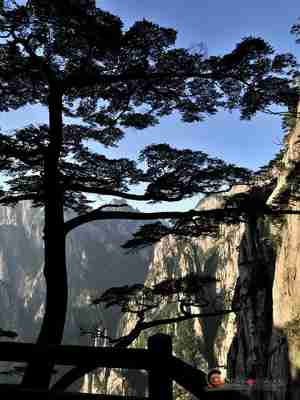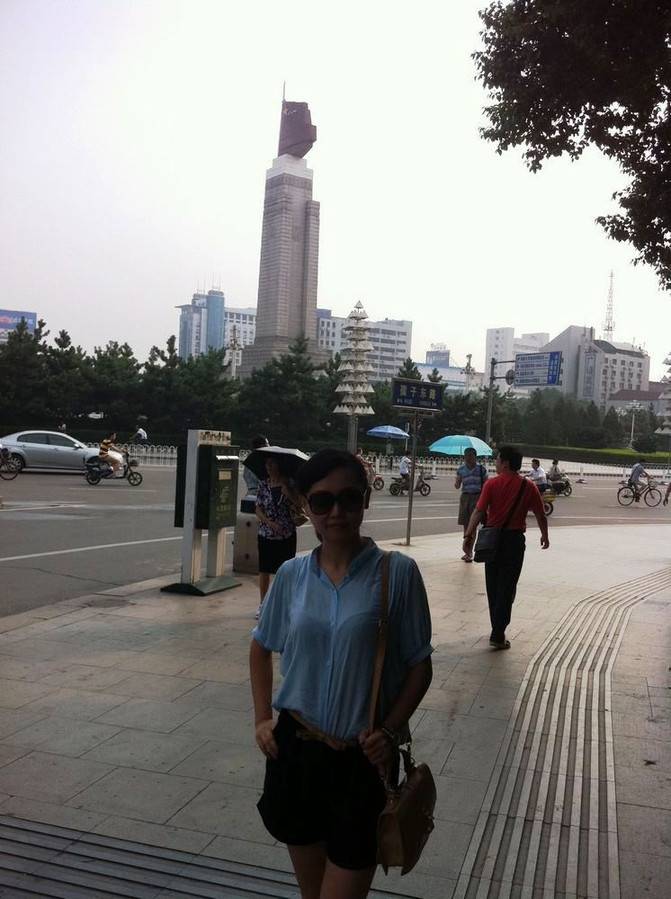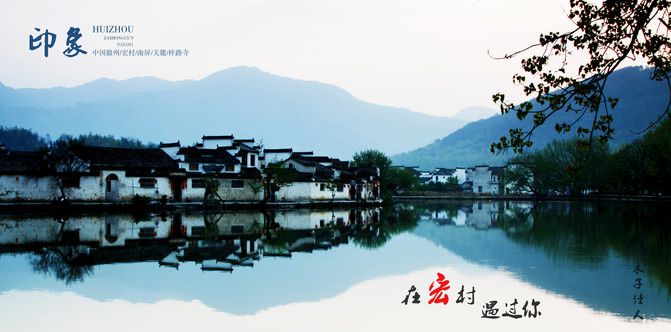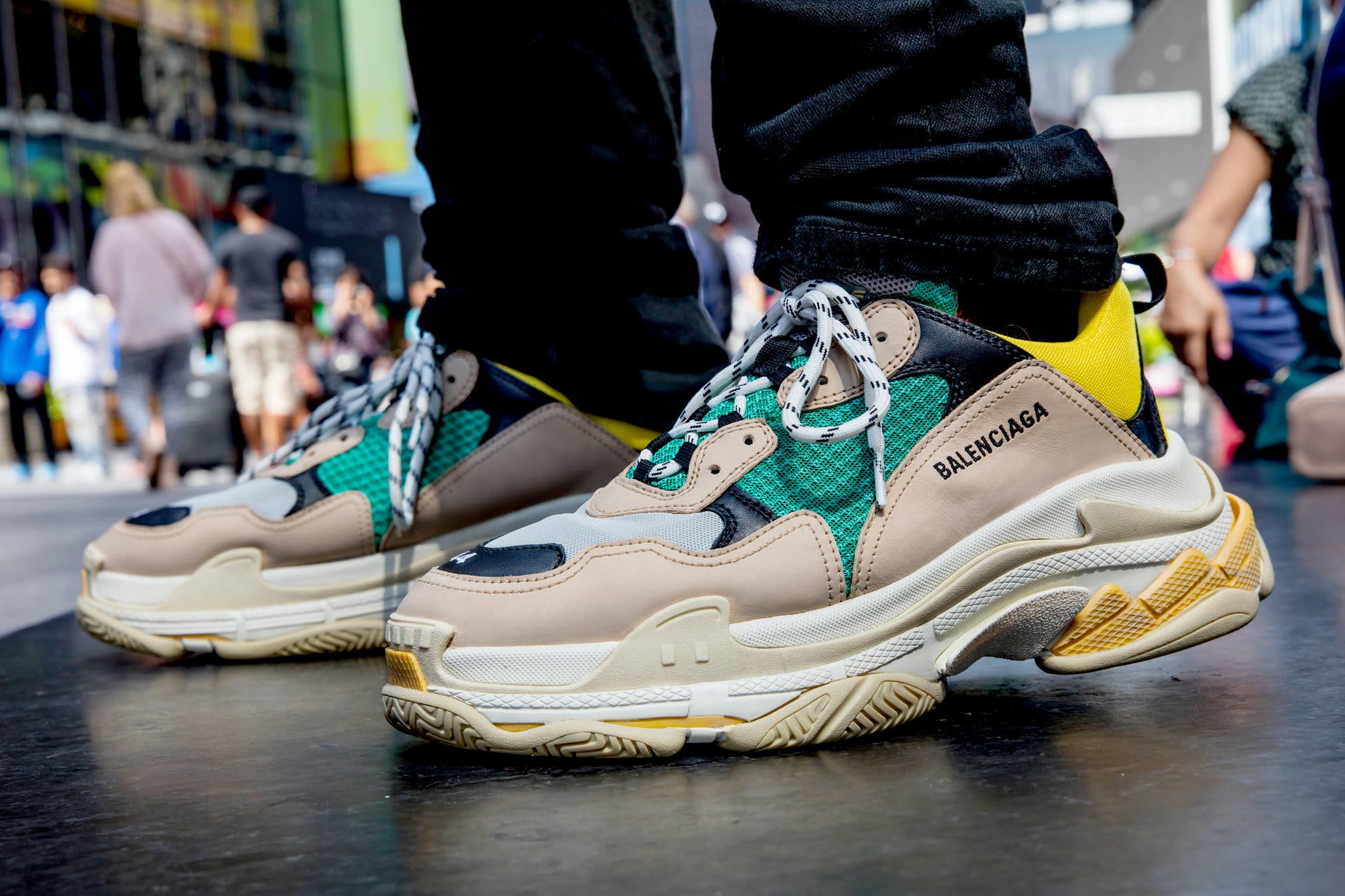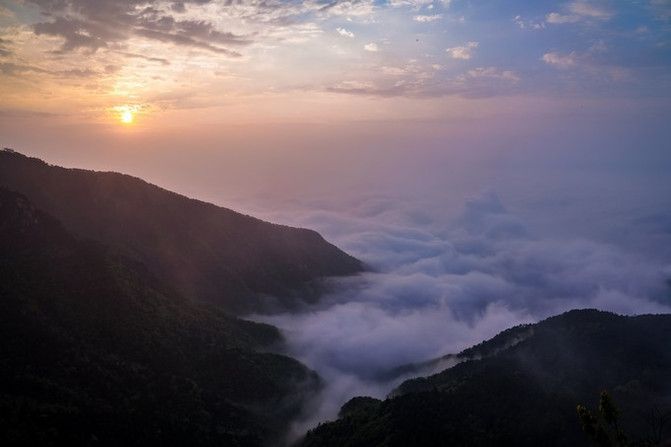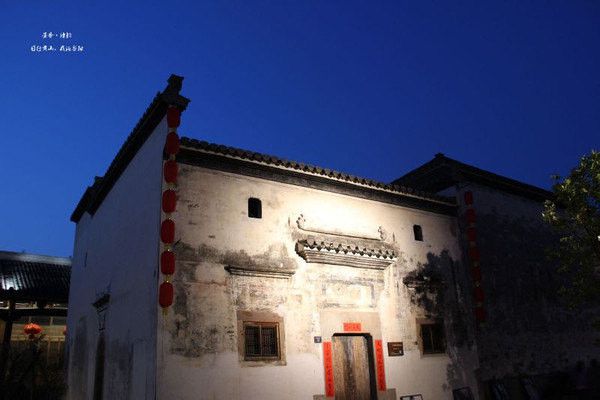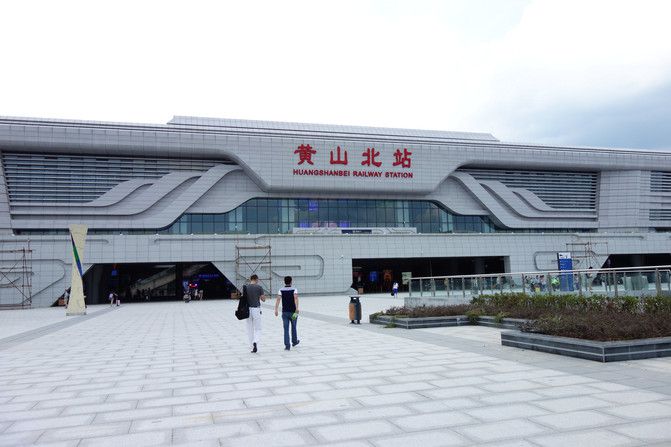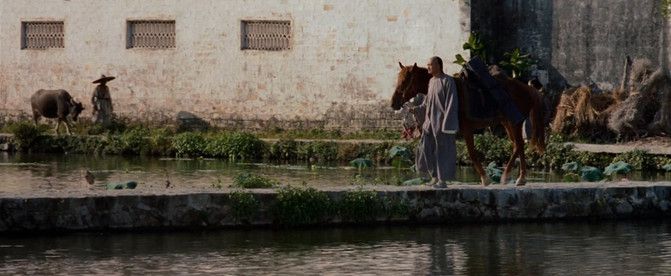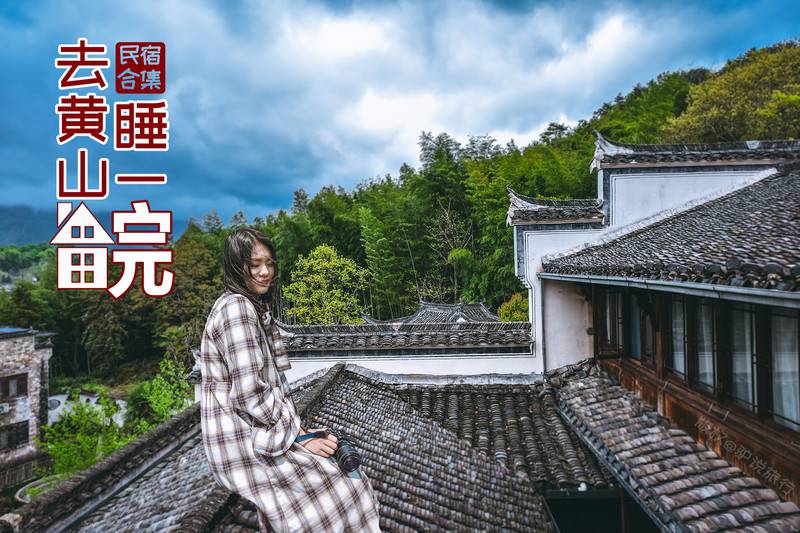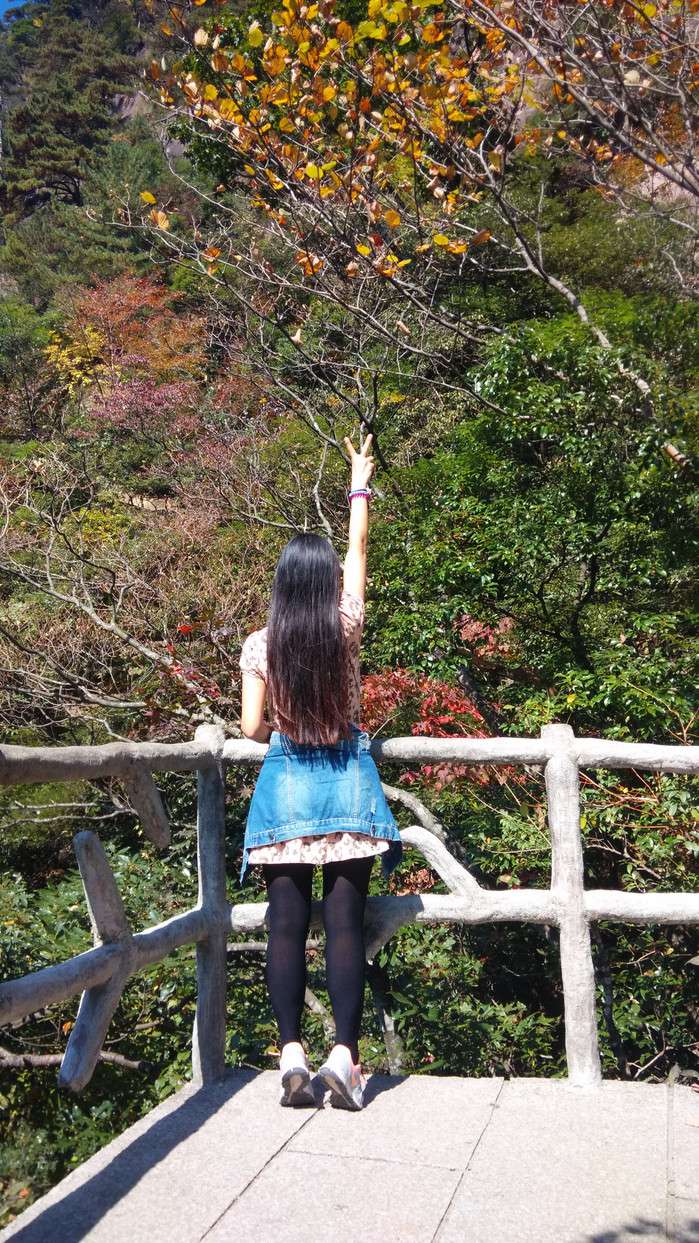February 10,2023 Post by :Ruoshui Chen
Tunxi Ancient Street, Tunxi Old Street in Huangshan ChinaA Trip to Mount Huangshan, Anhui Province, China, a Trip to Refresh Yourself
HUANGSHAN, China--(BUSINESS WIRE)--Located in Mid-East region of China, Anhui Province is the hinterland of world sixth largest urban agglomeration - Yangtze River Delta urban agglomeration. Mount Huangshan, a famous mountain in Anhui, is highly recommended to everyone. As one of the four important name cards of Beautiful China together with the Yellow River, the Yangtze River and the Great Wall, Mount Huangshan has been designated with three titles of the World Natural and Cultural Heritage, the World Geopark and the World Biosphere Reserve, highlighted with five uniques including wondrous pines, strange rocks, sea of clouds, hot springs and winter snow.
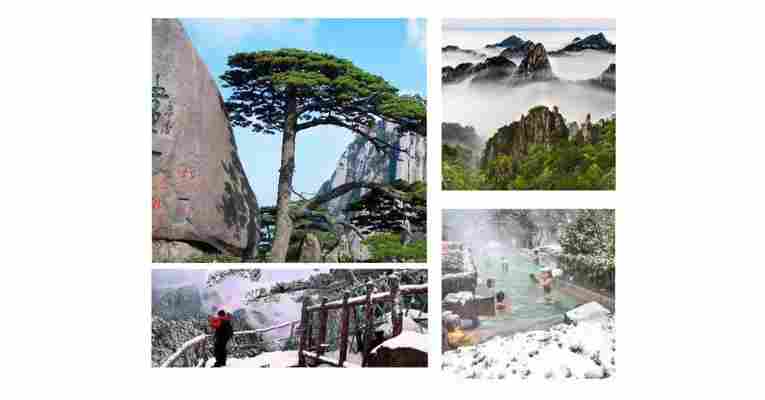
Wondrous Pines
Guarding Mount Huangshan like elves day and night, these Wondrous Pines grow in various forms rooted from the stones. Being famously, the Greeting Pine is too wonderful for words to describe as it integrates with the beautiful scenery of peaks and stones.
Strange Rocks
On Mount Huangshan, almost every peak has many strange rocks in different forms resembling like birds, animals and various figures, and even appearing like different scenery from various viewing angles. An ancient verse described it as "seen horizontally, mountain ridges presented vertically, mountain peaks come into sight far or near, different heights appear in eyes".
Sea of Clouds
With clouds and mist forming various images between peaks and valleys all year round, being so much spectacular especially after the rain, sunrise or sunset accompanied by light, the sea of clouds is coming and going in a hurry, sometimes calm, sometimes choppy with a little mysterious feeling, might be encountered but not sought for.
Hot Springs
There are 15 famous hot springs in Mount Huangshan and the most famous one is Huangshan Hot Spring where it is said that Emperor Huangdi bathed, rejuvenated and being immortal, and therefore called "Divine Spring". The average temperature of the main hot spring is 42.5 ℃ and the water mainly contains bicarbonate acid without sulfur, suitable for drinking and bathing.
Winter Snow
The winter snow in Mountain Huangshan makes it a spectacular fairyland when thousands of pine trees becoming "snow pines". With the continuous discovery and recognition of this beautiful winter scenery, the winter snow is now called the "fifth unique" of Mount Huangshan.
Welcome Korean friends to experience the "Five Uniques" trip in Mount Huangshan.
A Thousand Words Express a Common Idea? Understanding International Tourists’ Reviews of Mt. Huangshan, China, through a Deep Learning Approach
1. Introduction
Tourists’ experiential perceptions and specific behaviors are of importance to facilitate geographers’ and planners’ understanding of landscape surroundings. Many studies have exerted efforts to uncover hidden information from communications with tourists. Coeterier [ 1 ], for instance, identifies the theoretical scope of landscape perception and evaluation in planning and design to bring planners and tourists closer. Chang [ 2 ] proposed managerial strategies by interrogating the interaction between planners and users of the urban landscape in Singapore. Tourists’ psychological perceptions (e.g., perceived authenticity) could assist in the marketing of secondary explorations to destinations [ 3 ]. Other scholars [ 4 ] construe that a perceived authentic experience in sparking tourist imagination brings consumption in landscape tourism.
7, With the increasing demand for aesthetic values and spiritual enrichment, mountain regions with an appealing landscape and a high level of near-natural habitats are therefore of increasing importance for providing cultural ecosystem service to fulfill tourists’ psychological and psychical experience [ 5 ]. To be more specific, the tourist experience refers to an embodied experience, which can be achieved through active participation in the tourism environment and through the emotional senses of touch and affect [ 6 8 ], while a tourist landscape is a landform area that is different from other landscape types. It is recognized and accepted by users to meet their travel and leisure needs and expectations [ 9 10 ]. Accordingly, the assessment of tourist needs (e.g., willingness to undertake an activity) reveals substantial differences in the spatial diversity of intrinsic and service potentials in the natural landscape [ 11 ]. Recent studies underline the tourists’ unconscious need to provide helpful information for landscape managers [ 12 13 ].
During the process of searching for tourist information, social media plays an important role in the development of travel plans and is an important reference for tourists and therefore travel workers can better promote travel products through the use of social media [ 14 ]. Due to the increasing diffusion of web-based technologies among the population, tourists are provided with an ever-increasing number of platforms to voice their opinions in raw/unedited and honest form. Given this, recent scholars advocate the potential role of online user generated content (UGC) in tourism landscape research, which is considered as an electronic form of data source with rich information and is generally referring to the “data deluge” or “big data” [ 15 16 ]. It ranges from online reviews, social media, and blogs, providing extensive textual data which can be extracted, summarized, and re-presented in an intelligible and relevant form to the decision-makers who need it. Fisher et al. [ 17 ], for instance, described tourists’ preferences revealed by geotagged images and tweets shared publicly on Flickr and Twitter and proprietary mobile phone traffic provided by a telecommunications company. Results are used to map visitation rates to potential tourist destinations across Jeju Island, South Korea. In addition, Akehurst [ 18 ] uses tourists’ blogs to inform tourism practitioners.
Understanding tourist reviews, as a vital form of UGC, becomes ever-increasingly crucial for planning and management decisions of the tourism landscape. Tourists from all around the world publicly describe their experiences in texts on platforms. The Internet becomes the most resourceful medium to understand consumers from this vast market. Prior studies into online reviews of destinations identify specific tourist behavior [ 19 ], needs [ 20 ], and determinants of satisfaction [ 21 ], which help to build an economic model, identify strategic future landscape development and make efficient management decisions. For instance, insights generated from poor reviews suggest the necessity of compensation adjustments [ 22 ]. Moreover, Ip et al. [ 23 ] investigate online reviews to better understand the overseas destinations preferred by Chinese online users.
Effective capture of useful information from massive review texts requires a deep understanding of tourists’ expressive statements. Traditional methods rely on interpersonal interactions with tourists, such as experiential interviews and focus groups [ 24 ], which are expensive and time-consuming, often resulting in delays in time to practice. Massive tourists’ reviews can be mined to identify as many, or even more, and update opinions than direct interviews and to do so more quickly at a lower cost. A recent study [ 19 ] involves deriving a rich corpus of reviews of “things to do” in Las Vegas posted during 15 years following TripAdvisor’s founding in 2000, which counted 190,461 reviews of 989 tourism experiences. Moreover, online reviews provide a viable method to investigate international tourists’ opinions, which are particularly significant to inform domestic landscape planners and designers to develop corresponding services. For instance, Marine-Roig and Anton Clavé [ 25 ] have studied more than 100,000 relevant travel blogs and online reviews written in English by tourists who have visited the city of Barcelona in Spain. The corresponding findings help assess marketing strategies and improve their international landscape branding.
However, prior studies construe difficulties in extracting significant information from online reviews. For example, the very scale of online reviews with many repetitive or not-relevant statements is hardly processable for human readers, a limited scale of UGC is collected for relatively available analysis [ 26 27 ]. Such a selected sample might cause analysts to fail to include relevant information [ 28 ]. To address these issues, a machine-learning approach to identify and analyze tourist reviews has been introduced and applied. It draws on recent research in deep learning, to be specific, convolutional neural networks, in a manner of computer-assisted automated textual content analysis [ 16 ]. Relevant studies on product development have shown that the machine-learning approach identifies more unique and helpful categories, compared to the manual review [ 28 29 ]. Through machine-learning-based automated textual analysis, researchers are poised to interpret massive raw material into valuable insights.
Deep learning, or more specifically natural language processing (NLP), is an effective method for classifying and processing data. Compared with traditional data processing methods, it can learn and analyze data more thoroughly. By processing the review information on the travel platform, NLP can analyze the information characteristics of all reviews to find the deep meaning. This allows deep learning to better meet the needs of personalized recommendations for tourist attractions [ 30 ].
The purpose of this study is to use a state-of-art approach of deep learning algorithm to process and analyze online reviews regarding a Chinese landscape written by international tourists. Chinese landscapes with unique cultural meanings and forms increasingly attract international academic attention [ 10 ]. Among those, Mt. Huangshan (黄山 also known as Yellow Mountain), as a UNESCO (Paris, France) World Heritage Site in 1990, is one of the major natural landscapes attracting international tourists [ 31 ]. It shows the Eastern sentiments of “shan shui” (literally, “mountain water” in Chinese), which had a profound influence on the aesthetics of natural landscapes through imbuing the value of the indivisibility of man and nature [ 32 ]. The landscape is well known for its scenery, sunsets, peculiarly-shaped granite peaks, pine trees, hot springs, winter snow and views of the clouds from above. Mt. Huangshan is a frequent subject of traditional Chinese paintings and literature, as well as modern photography, as shown in Figure 1 and Figure 2 . In 2019, tourists made 74,022,100 trips in Mt. Huangshan, of which international visitors made 1,637,200 trips [ 33 ]. They mainly come from Singapore, Indonesia, Malaysia, France, the United States, South Korea, and Japan [ 33 ].
Accordingly, the significance of the current study is two-fold. First, though Mt. Huangshan is a famous natural landscape with a global reputation, limited prior studies address the questions of how international tourists perceive, concern, and evaluate the tourism landscape of Mt. Huangshan. Through a machine-learning-based analysis of posted reviews across international tourists, our results facilitate relevant landscape development and design decisions. Second, the proposed analytic method, BERT (bidirectional encoder representations from transformers) clustering, can be an exemplified state-of-art (SOTA) model to more effectively summarize user needs and inspire relevant landscape planners and decision-makers to conduct future researches.
Tunxi Ancient Street, Tunxi Old Street in Huangshan China
Appreciate Typical Hui-style Architectures & Exquisite Carvings

Once you step into the antique street, you’ll get awed by the exquisite Huizhou architectures - elegant structures, gray tile, white wall, ancestral halls and memorial archways. Huizhou architecture forms the most typical scene captured in traditional Chinese landscape paintings, perfectly integrated with the streets, mountains and rivers. Tunxi Ancient Street is the typical old street where local residents do business and live. You can see different styles in presenting the original Ming and Qing Dynasties architecture - shop front and workshop rear, shop front and storehouse rear, shop front and living rooms rear, or shop at the first floor and living rooms at the second floor. To have a vivid look at the Hui-style architectures, travelers can visit “Tongderen” Pharmacy to see shop front and workshop rear style; visit “Chen Dexin” sauce and pickles shop to view shop front and storehouse rear style, or stop by “Mao Huai” antique shop to see shop front and living rooms rear style. All the houses drain off water through the skylight because water means fortune, in this way, fortune will not run off outside. It is called “water returning to the main hall of the houses from four sides” by local residents.
When you stroll along the pedestrian street, you can fully appreciate the exquisite carvings decorated on beams, bracket arms, handrails, and window frames. Popular patterns include figures, flowers, fowl, insects, fish, clouds, and these are usually of auspicious themes, such as the “eight immortals crossing the sea”, "five bats around a shou (sign of longevity)”.
Visit Tunxi Museum & Chen Families’ Houses
Apart from visiting the old and typical shops, travelers can pay a visit to Tunxi Museum as well as Cheng Families’ Houses.
Tunxi Museum (屯溪博物馆)
Tunxi Museum is a comprehensive regional museum displaying Ming and Qing Dynasty furniture, calligraphy, paintings, porcelain, jade, bronze, Four Treasures of the Study, as well as Huizhou tile carvings. You couldn’t miss the Qing Dynasty Figure Carving – the whole tile carving is 128 centimeters high and 290 centimeters long, formed by 52 pieces of tile carvings. It presents three stories about the Three Kingdom, including A Battle at Changbanpo, Liubei Takes a Wife, and Borrowing the East Wind. You can also take a look at the She ink stone which is 1.62 meters long, 0.61 meters wide and at a weight of 360 kilograms. The ink stone can be called a unique treasure in the world. (Note: Please visit during 08:30~17:00.)
Cheng Families’ Houses (程氏三宅)
Cheng Families’ Houses are three Ming Dynasty architectures with 600 years’ history located at No.6, 7 and 28 of Baishu Dongli Alley. It was built by Cheng Min, the ceremonial master in the Ming Dynasty, hence the houses are named “Cheng Families’ Three Houses”. The houses are reputed as “The Treasure of Ming Dynasty Folk House” by the Forbidden City architect Fu Nianxi. Travelers can closely appreciate the elegant and exquisite wood carvings, stone carvings and brick carvings. (Note: It needs extra charge of 30 Yuan per person. Please visit between 08:30~17:00.)
Explore Profound Ink Stick & Ink Slab Culture
Have you ever seen the Chinese calligraphy? Do you know the “Four Treasures of Chinese Study” - writing brush, ink stick, ink slab and art paper? A stroll along Tunxi Ancient Street and a visit to the ink stick, ink slab shop will help you have a basic understanding of the profound Chinese calligraphy culture.
To know more about ink stick culture, it is suggested to visit Hu Kai-wen Ink-Stick Factory. This ink-stick factory was first built in 1765 with a history of more than 250 years. The factory sets more than 10 workshops covering the manin ink-stick producing process, including lighting up, filling, making ink, carving, gold drawing, etc. Travelers could not only see the whole process of making ink, but also enjoy more than 7800 styles of ink molds carved by famous sculptors since the Ming and Qing Dynasties.
Take Local Snacks or Sip Famous Tea
If you are a foodie, you are at the right place where you can taste delicious Huizhou cuisine and local snacks. Anhui Cuisine is one of the Eight Traditional Chinese Cuisine which focuses on simple ingredients, specific cooking times, pure flavor and various styles. Pick a comfortable restaurant to enjoy the popular dishes, like Soft Shell Turtle Stewed with Ham, Mandarin Fish (Chou Guiyu), Yipin Guo and Fried Odorous Bean Curd (Youjian Mao Doufu). If you are seeking for some snacks, you can try Wang Yitiao Wonton, Huangshan Shaobing (a Chinese style baked roll).
If you have more leisure time to sit for a while, you are recommended to enjoy a cup of famous tea, like Huangshan Maofeng (黄山毛峰), Qimen Black Tea (祁门红茶), and Taiping Kowkui (太平猴魁). With light fragrance, you’ll calm down when you are in the bustling street.
>> 3 Days Huangshan Highlights Tour with Tunxi Ancient Street
>> 4 Days Huangshan Tour to Huizhou Culture Exploration
